Winter bikes: do you really need one?
We investigate whether a dedicated bike for the colder season is a necessity or a luxury, and ask do you really need a winter bike?
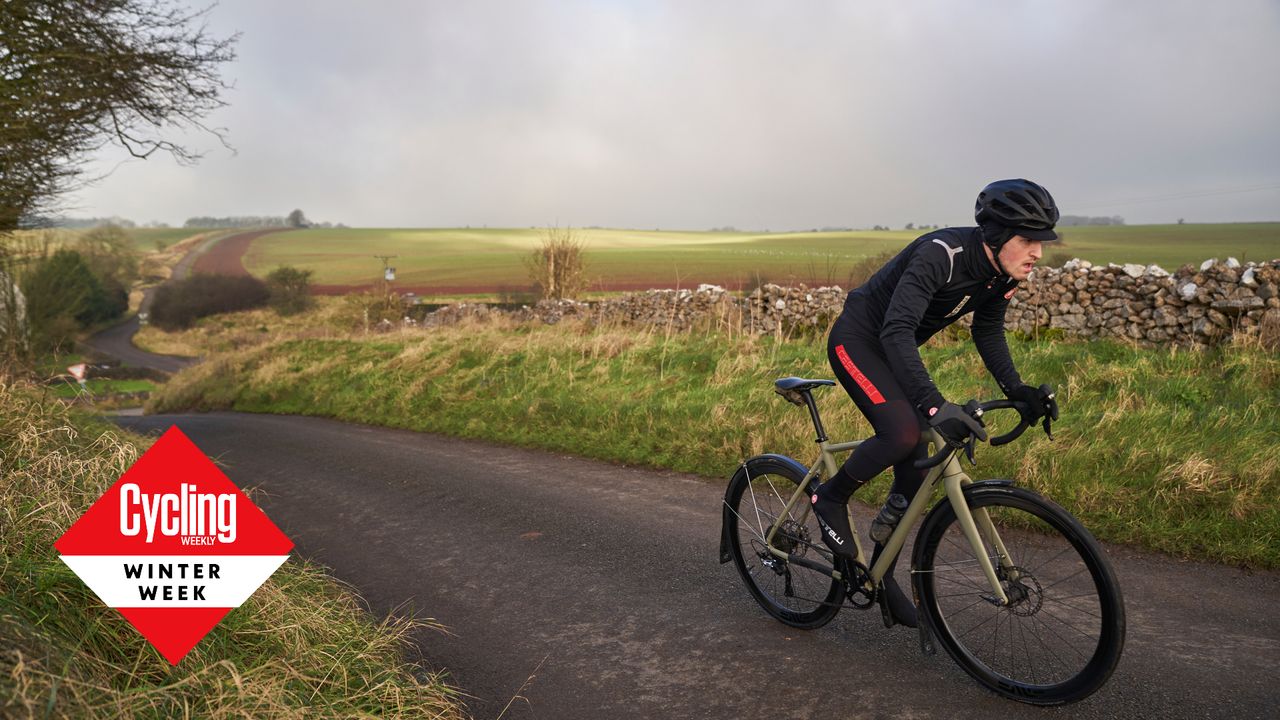
We're cyclists, and therefore it's very easy to manufacture an excuse to buy another bike to add to the collection, but is a dedicated winter bike a luxury you could really do without? Or is it a necessity?
What is a winter bike?
Put simply, a winter bike is a 'second' (or third or fourth...), relatively inexpensive bike that you literally ride in the winter (you didn't see that coming, did you).
Normally, though, it's a bit more than that as it should be equipped for winter riding: disc brakes are becoming an almost must, and mudguards/fenders, cheap/old wheels and wider tyres are all things that are regularly fitted by the winter bike user.
You may also wish to include a frame-mounted bike pump to deal with the inevitable punctures, one of the best bike saddlebags for spare tubes/clothing and, of course, a set of the best bike lights. All common sense stuff.
You could, of course, only have one bike and put all these items on it for winter, but constantly swapping parts on and off dependent on the weather can be painful when you just want to get out and ride.
Your bike will undergo far more wear and tear in the rougher weather, too, so it pays to keep your best bike out of the worst of it.
Why have a winter bike?
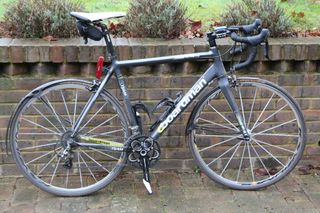
We're going to assume here that you are not going to go into hibernation between December and March (or October and April, as is more often the case with winter), and that you are going to go carry on riding. That's riding in the real world, not on a turbo trainer in the shed...
The winter brings with it bad weather, and in Britain and some parts of the US that also means mud, salt and potholes. A bike can very quickly get covered in a black film of corrosive crap that can have an adverse effect on gears, braking surfaces and the frame itself, let alone you getting splashed with grime too. A soggy bottom is not a great companion on long, winter rides.
Winter is hard on bikes, and there's nothing worse than watching your £3,000+ pride and joy slowly dissolving.
You don't have to just use a winter bike during the winter months, though. Summers can certainly be just as wet, so think of it more as a 'bad conditions' bike.
What sort of bike is best?
Winter bikes can really be anything: your old road bike, a cyclocross bike, or even a mountain bike. The best adventure and gravel bikes are becoming increasingly common, thanks to their wide tyres and disc brakes - both of which come in handy during adverse winter conditions.
Of course, you don't need to make a new winter-ready purchase: many people hang on to their old bike when they get a new one with the sole purpose of turning it into a winter bike.
Winter bikes traditionally feature a metal, rather than carbon fibre, frame with many people swearing by steel. Certainly one of the best steel bikes would make a fine winter bike thanks to its blend of ride quality and durability, but they don't come cheap.
However, you can still pick up second-hand classic steel frames at affordable prices. These can make wonderful winter bikes, such as this beautiful Mercian, and allow you to build a dedicated 'bad weather' bike without breaking the bank.
If you are buying from new, aluminium is a sound choice due to its affordability. If you'd like to read more about metal frame materials, we've an article dedicated to the potential merits of steel, aluminium and titanium.
You can use a carbon fibre bike, of course, but these tend to be more expensive and you may not want to get them all muddy and mucky.
It's a choice that inevitably may come down to your budget, but you could put together a decent winter machine for £400-£500 / $450-$550, with a mix of new and old parts - and perhaps much less if you go for an entirely second hand build.

What should I look for in a winter bike?
We've already mentioned that the fitting of a pair of the best mudguards or fenders is a must - they not only stop you getting wet, but they will also stop anyone riding with you suffering from your spray, and reduce dirt splashing all over the bike's components.
In order to fit mudguards/fenders, you'll need a bike with clearance for them - so check that there's enough space to fit them.
If you are going for the 'fully-fixed' variety that require fixing to the frame with bolts, check that your frame actually has these mounts or 'eyelets' - many carbon-fibre frames do not.
If you're chosen winter frame doesn't have dedicated fender eyelets then you can buy 'clip-on' versions. These don't tend to offer quite the same coverage as fixed guards but they are certainly better than tackling winter weather without any protection.
Equally, if you are going to fit 28mm (or more) tires ensure there is enough frame clearance to fit them.
It's a good idea to try and replicate the riding position across your road bikes, so compare how your bikes are set up or you may find it uncomfortable swapping between the two machines.
Disc brakes
Disc brake road bikes have grown in popularity. They are now appearing at lower price points than previous years, indeed some model families are now even disc brake only.
So what's the benefit of discs over rim brakes during the winter months? They tend to offer more assured and consistent braking, especially in the wet.
The removal of the standard rim caliper also means there is likely to be more clearance for those must-have mudguards as well as for wider tyres.
What sort of wheels should I use?
While you may have the lightest, flashiest carbon fibre rimmed wheels you can afford on your 'main' bike, you should really fit something intentionally robust on your winter bike.
As the contact point with all that winter grime, you can expect your wheels to get a thorough coating of gunk. Road surfaces often deteriorate during the winter months too and aren't a good match for lightweight, low spoke count carbon race wheels.
Many people keep a set of old alloy wheels just for the purpose - perhaps OEM ones that were upgraded from their main bike, or ones picked up cheaply in a bike shop sale - look for a pair with a higher spoke count and are easily serviceable. After using them throughout the winter, you'll want access to the bearings, allowing you to re-grease them or replace them so they're ready for another stint the following winter.
Fitting tyres with puncture resistance and wet-weather tread is also a good idea. Most tyre manufacturers offer at least one winter-specific model.
What about gears?
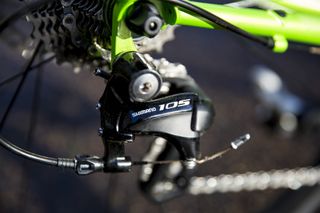
With all that equipment on board a winter bike it is inevitably going to be heavier than your main machine.
A weighty winter bike is going to be slower - factor in weather/road conditions, and you won't be setting any land speed records on it.
But wait until you get back on your best bike in Spring and see how you fly up those familiar climbs.
Some people fit lower gears to a winter bike so that they are more comfortable hauling its mass up hills.
A compact chainset with 50/34-tooth rings coupled to a wide-range cassette with large 28 or 32-tooth low gear may be a good idea. Others prefer to exactly replicate the gears on their main bike.
Equally, there is a train of thought that keeping it simple is the way forward for a winter steed, and you'll see a few fixed gear or single speeds winter bikes on the roads as proof of this. Certainly the removal of derailleurs means less parts to keep clean!
If you're sticking with gears, there's not much point fitting Shimano Dura-Ace on a winter bike, something from Shimano's, SRAM's or Campagnolo's lower or mid-range groupsets offer functionality and cost-effective replacement should parts start to wear out.
Is it worth buying an off-the-peg winter bike?
Several manufacturers offer ready-made winter bikes, complete with mudguards. If you have the money, these can be a good option. If you don't have that sort of budget, then a second-hand bike can be a good starting point.
How do you look after a winter bike?

Even after just one winter road ride, your bike can look like this
Look after your winter machine as you would your regular one - check over components regularly, and pay particular attention to rim and disc rotor wear, brake block and disc brake pad wear, the condition of your tyres, bottom bracket, headset and hub bearings.
The chain and transmission components will inevitably need to be kept well lubricated to deal with wet conditions.
Spraying your chain with light lube, such as GT85, after a very wet ride or after you have washed it should prevent it from going rusty, particularly if you've ridden on gritted/salted roads.
You can then wipe off the light lube later when the bike has dried out and replace it with one of the best chain lubes, perhaps one with greater viscosity as this is less likely to wash off when riding.
Be aware, though, that stickier lubes have the side effect of attracting dirt, forming a black paste that wears through components with frightening ease. You will have to degrease your chain if the build-up gets out of hand.
So, can I do without a winter bike?
Of course you can. You can carry on riding your regular bike all-year round, but just be wary that you will inevitably have to deal with component wear, and that may turn into an expensive business - possibly even a false economy.
There's also an element of fun getting on a cheap and cheerful bike, a faithful companion in adverse conditions. If nothing else, it will make you appreciate your best bike even more.

Thank you for reading 20 articles this month* Join now for unlimited access
Enjoy your first month for just £1 / $1 / €1
*Read 5 free articles per month without a subscription

Join now for unlimited access
Try first month for just £1 / $1 / €1
Get The Leadout Newsletter
The latest race content, interviews, features, reviews and expert buying guides, direct to your inbox!
Luke Friend has worked as a writer, editor and copywriter for twenty five years. Across books, magazines and websites, he's covered a broad range of topics for a range of clients including Major League Baseball, the National Trust and the NHS. He has an MA in Professional Writing from Falmouth University and is a qualified bicycle mechanic. He has been a cycling enthusiast from an early age, partly due to watching the Tour de France on TV. He's a keen follower of bike racing to this day as well as a regular road and gravel rider.
-
 Lorena Wiebes surges to 100th career victory at Gent-Wevelgem
Lorena Wiebes surges to 100th career victory at Gent-WevelgemThe Dutch rider continued her near-unbeaten 2025 with SD Worx–Protime
By Alex Lancaster-Lennox Published
-
 “It is crazy”: Mads Pedersen takes historic victory at Gent-Wevelgem
“It is crazy”: Mads Pedersen takes historic victory at Gent-WevelgemThe Lidl-Trek rider's dominance marked the second successive men's winner in more than 30 years and becomes the seventh member of the Club Trois.
By Alex Lancaster-Lennox Published
-
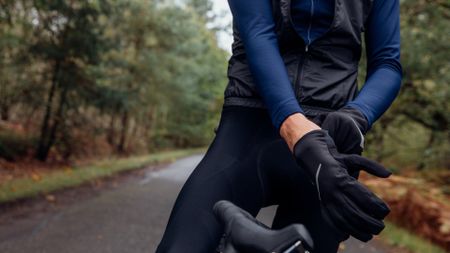 Riding with Raynaud’s: How to beat cold hands and feet over winter
Riding with Raynaud’s: How to beat cold hands and feet over winterSymptoms of Raynaud's syndrome extend far beyond simply having chilly hands and feet, our experts guide you through the how-to on making winter riding bearable despite the disease
By Lexie Williamson Published
-
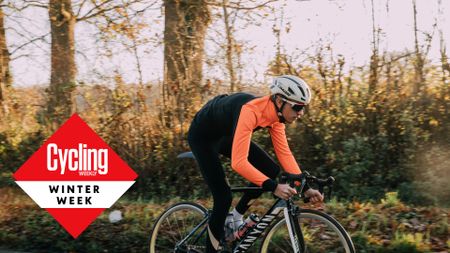 18 tips for finding winter motivation to ride
18 tips for finding winter motivation to rideDon't let cooler weather keep you off the bike, there are plenty of ways to keep the enthusiasm high
By Andy Turner Published
-
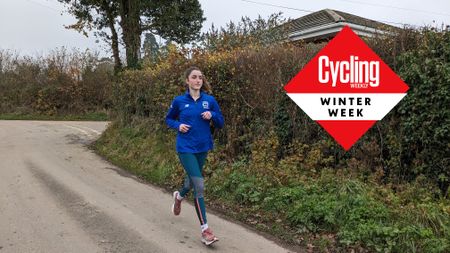 How much running is ‘too much’ running for cyclists - I trained for a marathon to find out
How much running is ‘too much’ running for cyclists - I trained for a marathon to find outMany cyclists like to swap their cleats for running shoes - at least for some sessions — during winter, but where should we draw the line?
By Ellie Donnell Published
-
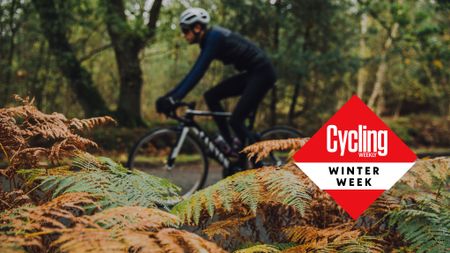 Symptoms of Seasonal Affective Disorder are more common than you think - here's how to battle the blues
Symptoms of Seasonal Affective Disorder are more common than you think - here's how to battle the bluesIt’s no secret that the winter months can switch one’s mood to a doom and gloom setting – here’s how to lighten the load
By Rob Kemp Published
-
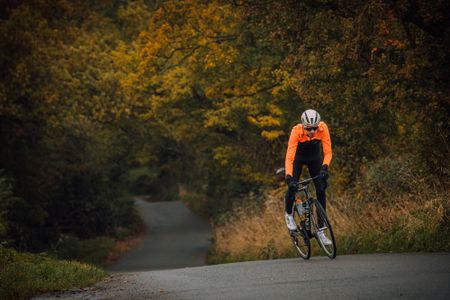 These five winter training mistakes can ruin your fitness - here's how to avoid them
These five winter training mistakes can ruin your fitness - here's how to avoid themThe pitfalls to avoid if you want to emerge fit and well come spring
By Andy Turner Published
-
 Seven benefits of riding outdoors - which you’ll miss out on if you train inside all winter
Seven benefits of riding outdoors - which you’ll miss out on if you train inside all winterAs with most things in life, there is a balance to be struck…
By Andy Turner Published
-
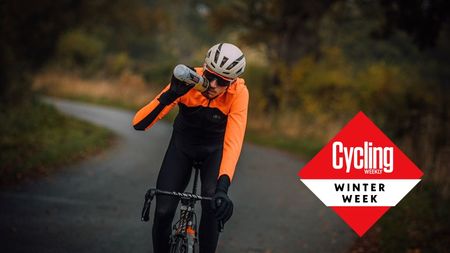 Winter fueling: how to match your cycling nutrition to the demands of cold weather riding
Winter fueling: how to match your cycling nutrition to the demands of cold weather ridingGetting the most out of your winter training means making sure you are optimally fuelled for every ride - here's what you need to know about the specific demands of cold season nutrition
By Joe Laverick Published
-
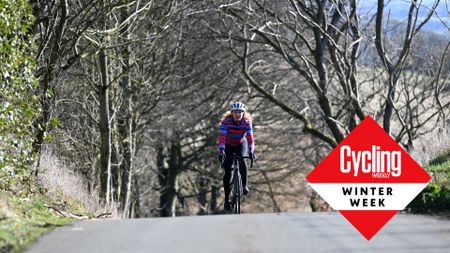 Five things I wish I knew before my first winter of road riding
Five things I wish I knew before my first winter of road ridingThere's a special satisfaction to riding through the winter - but also plenty of challenges!
By Anna Marie Abram Published